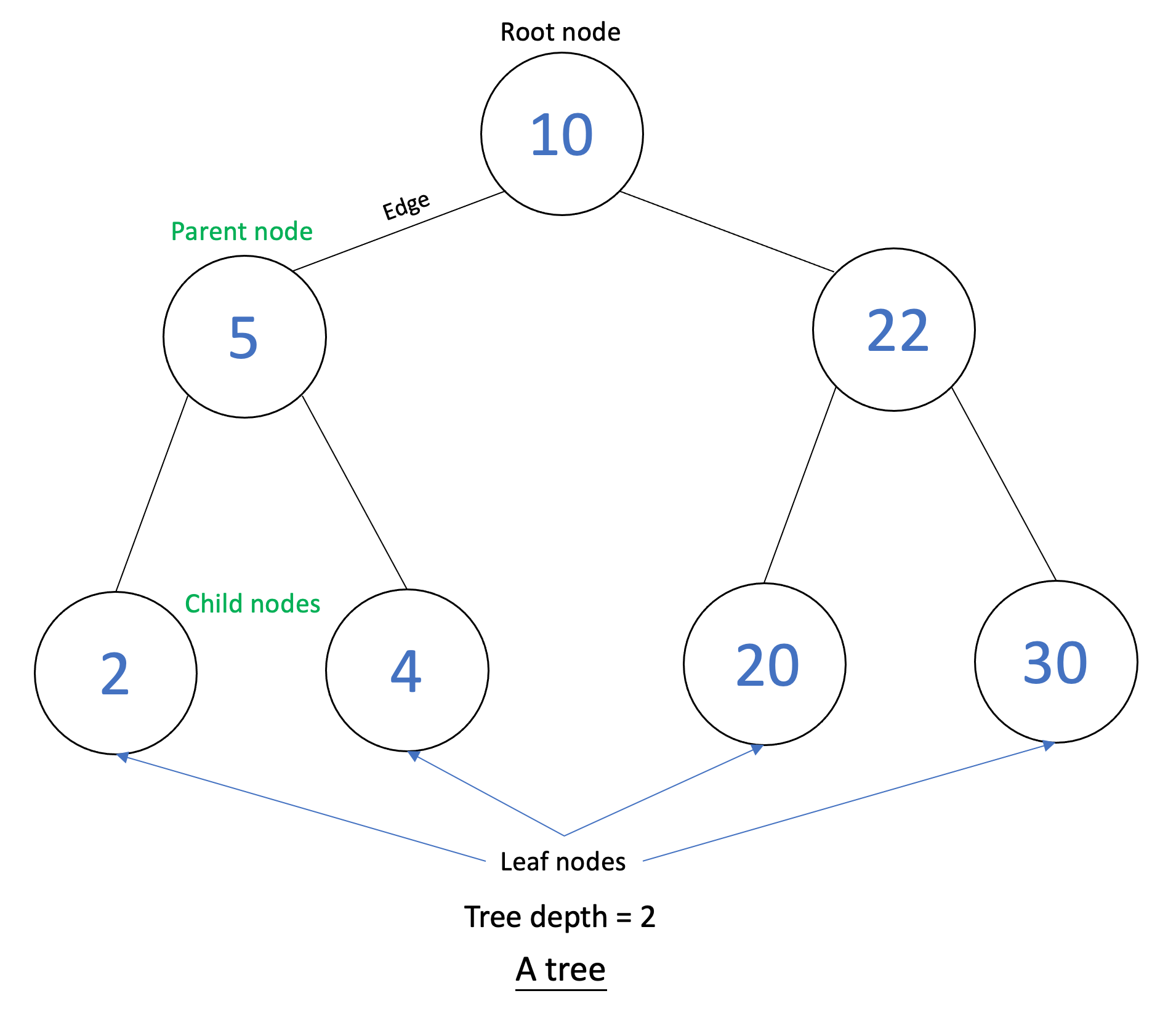Trees
Trees are data structures made out of a root node connected to subtrees called child nodes. Trees are a type of graph.
Below is a visualization of a labeled tree.

Tree Terminology
- Node: An object that stores data and links/pointers to child nodes.
- Root node: The first node in a tree.
- Edge: A link between two nodes.
- Child node: A node pointed to by a parent node.
- Parent node: A node that has one or more child nodes.
- Leaf node: The last node in a path. Leaf nodes have no children.
- Height of a node: The number of edges between that node and the furthest leaf node.
- Depth of a node: The number of edges between that node and the root node.
- Depth of a tree: The number of edges between the root node and the furthest leaf node.
Types of Trees
- Binary trees: Trees where each node has less than or equal to 2 child nodes.
- Binary search trees: A binary tree optimized for binary search. Each node’s left child has a value less than the current node, and its right child has a value greater than the current node.
- Tries: A tree that contains characters. Useful for storing dictionaries of words.
Tree Traversal
There are three main methods for tree traversal: pre-order, in-order, and post-order traversal. The main difference between each method is when the root node is visited.
Pre-order traversal
Here, the root node is visited first, hence the name pre-order traversal.
Steps:
- Visit the root node.
- Visit the left subtree.
- Visit the right subtree.
This recursive Python function prints a binary tree via pre-order traversal:

For the other traversal methods, we rearrange the order of the lines of code in the if statement.
In-order traversal
Steps:
- Visit the left subtree.
- Visit the root node.
- Visit the right subtree.
Post-order traversal
Steps:
- Visit the left subtree.
- Visit the right subtree.
- Visit the root node.
Time Complexity
Tree traversal time complexity: \(O(n)\)
More Resources
Below are some more resources to learn about trees:
Programiz - Tree Data Structure